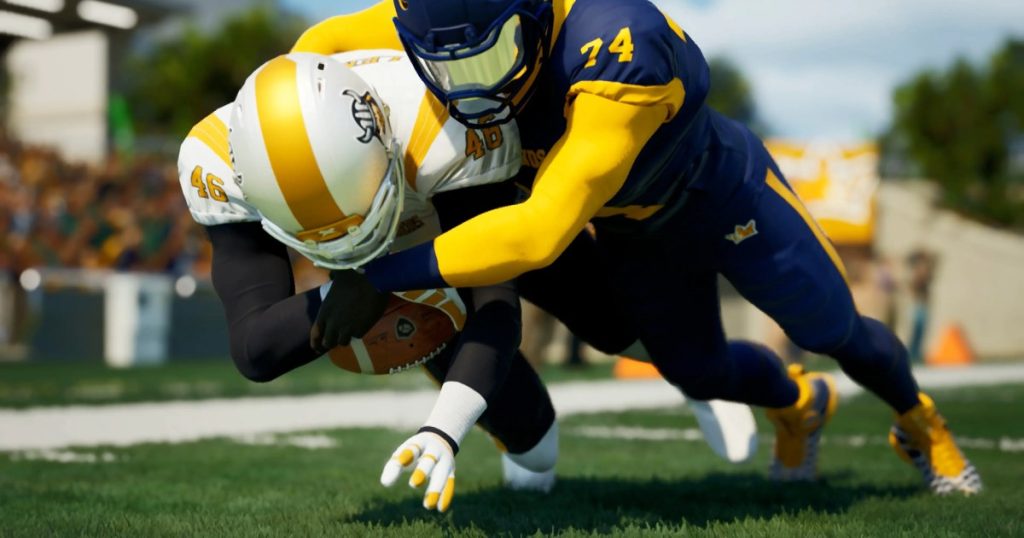Prepare for some competition next month as Madden NFL 25 will be facing off against Maximum Entertainment’s upcoming release of Maximum Football, a free-to-play simulation sports game. While lacking the official NFL branding, Maximum Football sets itself apart with a physics-based gameplay approach, providing a more realistic feel to actions like hits and throws compared to Madden’s reliance on pre-baked animations. Game director Micha Brown emphasized the focus on physics-based gameplay and authentic moments in an interview with Digital Trends before the early access release of Maximum Football.
In our discussion, Brown delves into the reasons behind choosing a physics-based approach for Maximum Football, the challenges faced in implementing it, the introduction of a “physics mode” setting, and the support provided by Unreal Engine 5. The evolution of the game since its beta phase in the summer and the decision to offer it as a free-to-play experience are also covered, hinting at Maximum Football potentially shaking up the Madden series.
Digital Trends: What areas did the development team aim to enhance from previous Maximum Football iterations?
Micha Brown: Nearly everything. The expanded development team allowed us to elevate all aspects of the game, including customization, gameplay, online play, and more. This new entry represents a complete overhaul and improvement over its predecessors.
How does the physics-based gameplay of Maximum Football differentiate itself from other football video games like Madden NFL 25?
We strived to establish a robust physics foundation at launch, focusing on non-deterministic gameplay for emergent outcomes. Our approach blends player attributes and physics calculations to create authentic tackle animations dynamically adjusted during collisions, offering a level of realism unmatched by other games.

What are the unique hurdles encountered in developing a physics-based gameplay for Maximum Football?
Creating realistic physics without compromising performance is a significant challenge. Balancing physics-based collisions for multiple players, while maintaining athleticism and visual appeal, requires intricate ragdoll implementations. The “physics mode” setting allows players to experience deeper physics interactions on capable machines.
Why opt for Unreal Engine 5 as the game engine for Maximum Football, considering its unconventional use in sports games?
Unreal Engine 5 offers superior lighting, animation, and development tools that enhance game visuals and efficiency. The engine’s animation blending capabilities and widespread developer familiarity were key factors in our decision, contributing to a visually striking gameplay experience.
What were the key insights gained from the summer beta of Maximum Football, and how has the game evolved since then?
Player feedback from the beta highlighted the game’s core appeal while requesting smoother gameplay, bug fixes, and enhanced physics. Subsequent updates have addressed these concerns, refining physics interactions and overall gameplay, with ongoing post-launch support and updates planned.

Why was the choice made to offer Maximum Football as a free-to-play title rather than a premium release?
Embracing a free-to-play model enables continuous updates post-launch, unrestricted by annual game cycles. This approach allows for sustained development, community feedback integration, and feature expansions without the constraints of traditional yearly releases. The game’s dynamic evolution under this model sets it apart, offering players a robust, evolving football experience.
Maximum Football debuts in early access on Steam for PC on November 7, with plans for PS5 and Xbox Series X/S versions in the works.


